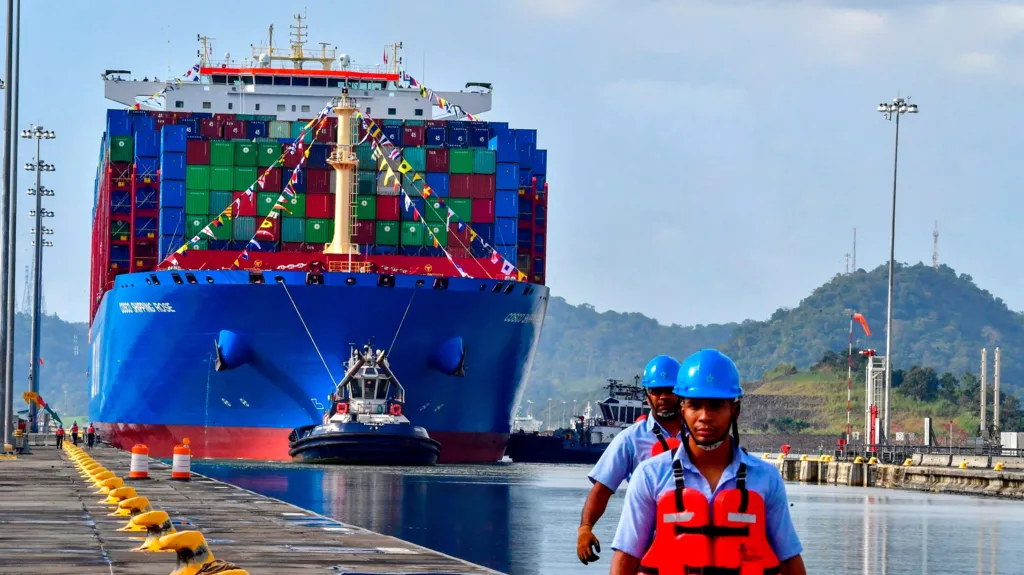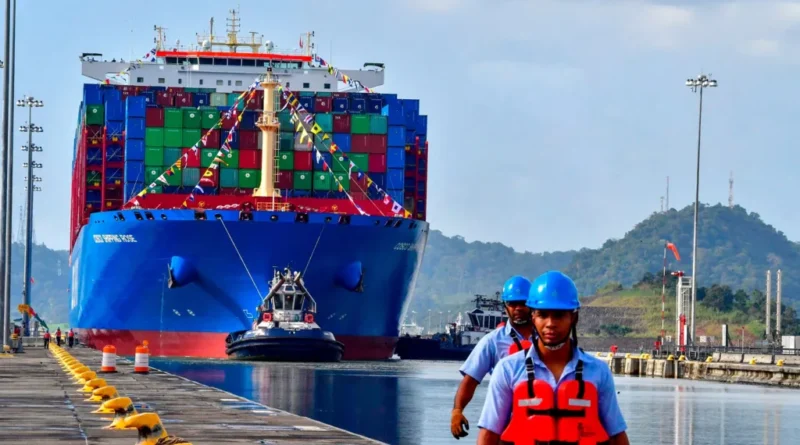China: Strategic Interests, Economic Implications, and Geopolitical Tension
The Panama Canal has long been one of the world’s most crucial maritime passages, providing a shortcut between the Atlantic and Pacific Oceans and reducing the shipping distance by thousands of miles. As a key piece of global trade infrastructure, the canal plays a significant role in international commerce and geopolitics. Over the years, many countries have taken a keen interest in the canal, but one nation in particular—China—has emerged as a central player in the region, sparking both economic opportunities and geopolitical tensions.
A Brief Overview of the Panama Canal
Opened in 1914, the Panama Canal is a 50-mile waterway that cuts through the isthmus of Panama, connecting the Pacific Ocean to the Caribbean Sea and, by extension, the Atlantic Ocean. The canal was originally built by the French under the leadership of Ferdinand de Lesseps but was completed by the United States after a series of technical and financial setbacks. The U.S. operated the canal until 1999, when control was handed over to Panama under the Torrijos-Carter Treaties, marking the beginning of Panama’s full sovereignty over the canal.
Today, the Panama Canal is operated by the Panama Canal Authority (ACP) and continues to be one of the most vital trade routes in the world, facilitating the movement of goods between Asia, Europe, and the Americas. Over 12,000 vessels pass through the canal each year, carrying a wide range of products including oil, consumer goods, and manufactured items. The canal also serves as a key link in the supply chains of some of the world’s largest economies, making it an essential piece of global economic infrastructure.
China’s Growing Influence in Latin America
China has been making significant inroads into Latin America over the past two decades, driven by a desire to secure new markets for its goods, expand its energy resources, and increase its political influence. As China’s economic and geopolitical ambitions have grown, the country has sought to develop closer ties with Latin American nations through trade agreements, infrastructure investments, and financial assistance. This relationship has strengthened in countries such as Venezuela, Brazil, Argentina, and, more recently, Panama.
China’s Belt and Road Initiative (BRI), launched in 2013, has been a driving force behind this expansion. The BRI is a global development strategy that seeks to build infrastructure and invest in trade routes connecting China to countries across Asia, Africa, and Latin America. Through the BRI, China has sought to enhance its connectivity with global markets, positioning itself as a key player in global trade networks. Latin America, with its strategic geographic location and rapidly growing markets, has become an important partner in this initiative.
The Panama Canal is an integral part of China’s Latin American strategy, given its importance in facilitating trade between Asia and the Americas. By strengthening its relationship with Panama, China can gain easier access to the U.S. market while bolstering its position in global trade.
China’s Strategic Interests in the Panama Canal
China’s interest in the Panama Canal is multifaceted, blending economic, political, and strategic considerations. As a rising global power, China has long been focused on securing vital infrastructure to enhance its trade capabilities and expand its influence around the world. In this context, the Panama Canal stands out as a critical asset that could help China improve its trade efficiency, reduce shipping costs, and gain a competitive advantage in global markets.
baca juga : Yoo Yeon Seok: Perjalanan Karier dan Pesona Aktor Serba Bisa

Economic Interests: Trade and Infrastructure Investments
China’s economic interest in the Panama Canal is primarily centered around trade and infrastructure development. The canal allows Chinese goods to move more quickly from Asia to the U.S. East Coast and Europe, which enhances China’s ability to export products to these major markets. Given China’s status as the world’s largest exporter of goods, the canal’s role in reducing transit time and transportation costs is critical to maintaining its competitive edge.
In addition to trade benefits, China has been active in investing in infrastructure projects related to the canal. In 2016, China’s state-owned company, China Communications Construction Company (CCCC), signed a deal with Panama to expand and modernize the canal’s infrastructure, including the development of ports and terminals. These investments have allowed China to increase its commercial presence in the region, creating economic ties with Panama while securing access to one of the most important trade routes in the world.
China has also taken an interest in developing the region’s logistics infrastructure. In 2017, China’s Cosco Shipping Lines, one of the largest container shipping companies in the world, secured a deal with the Panama Canal Authority to operate a container terminal at the canal’s Atlantic side. This agreement further deepens China’s involvement in the canal’s commercial activities and underscores its growing influence in Panama’s economy.
Geopolitical and Strategic Interests
Beyond the economic benefits, China’s involvement in the Panama Canal is also driven by geopolitical and strategic objectives. The canal is a critical link between the Pacific and Atlantic Oceans, and control over trade routes such as this one can provide a country with significant leverage in global affairs. By investing in the Panama Canal and forming stronger ties with Panama, China seeks to enhance its geopolitical footprint in the Western Hemisphere and establish itself as a more dominant player in global politics.
China’s increasing presence in Latin America, including its deepening engagement with Panama, has raised concerns in the United States, which has historically viewed the region as its sphere of influence. Some analysts see China’s growing influence in Panama as part of a broader effort by Beijing to challenge U.S. dominance in the Western Hemisphere. While the United States has long been the dominant economic and military power in the region, China’s increasing investments and political ties in countries like Panama represent a shift in regional dynamics.
Furthermore, China has been developing closer ties with other Latin American countries with access to key global trade routes, such as Venezuela and Brazil. In this context, the Panama Canal plays a pivotal role in enhancing China’s strategic positioning in the region and securing access to the Americas.
The Impact on Global Trade and U.S. Influence
The rise of China’s influence in Panama has implications not only for the U.S. but also for global trade flows and geopolitics. As China continues to build its commercial and political ties in Panama, it stands to benefit from improved access to the canal’s transportation routes, which could reduce shipping costs and improve the efficiency of its supply chains. This, in turn, could further solidify China’s position as the world’s largest trading nation and disrupt traditional trading patterns between the U.S. and Latin American countries.
For the United States, China’s growing presence in the Panama Canal is a reminder of the shifting global balance of power. While the U.S. maintains a strong political and military presence in the region, China’s economic clout and growing geopolitical influence present a challenge to U.S. dominance. As China continues to invest in infrastructure projects in Panama and other Latin American nations, it is likely to further increase its leverage in trade negotiations and expand its global influence.
Challenges and Controversies
Despite the potential benefits, China’s involvement in the Panama Canal has not been without controversy. Some Panamanian citizens and political figures have expressed concerns about the long-term consequences of allowing China to deepen its control over key infrastructure projects. There are fears that China’s growing influence could result in an erosion of Panama’s sovereignty or lead to the country becoming overly dependent on Chinese investments.
Additionally, the U.S. government has been vocal in its opposition to China’s growing presence in Panama, citing national security concerns. The U.S. has long viewed the Panama Canal as a strategic asset, and some policymakers have expressed worries that Chinese control over key infrastructure projects in the region could allow Beijing to gain a foothold near U.S. borders. While Panama has emphasized its neutrality and commitment to maintaining strong ties with both China and the U.S., the increasing influence of China in the canal has the potential to further strain U.S.-Panama relations.

